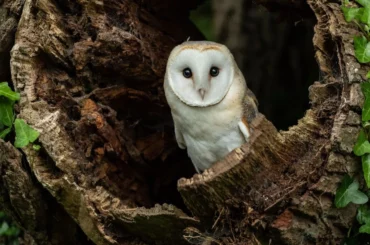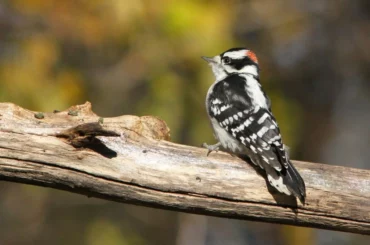Hawks are a common sight in Texas. The state has several species of hawks, ranging from small to large and easy-to-see to hard-to-spot. Some hawks are more likely to be seen during migration than others, but you can spot all species throughout the state at some point.
Here are 16 of the hawks you will find in abundance in Texas.
1. Red-Shouldered Hawk
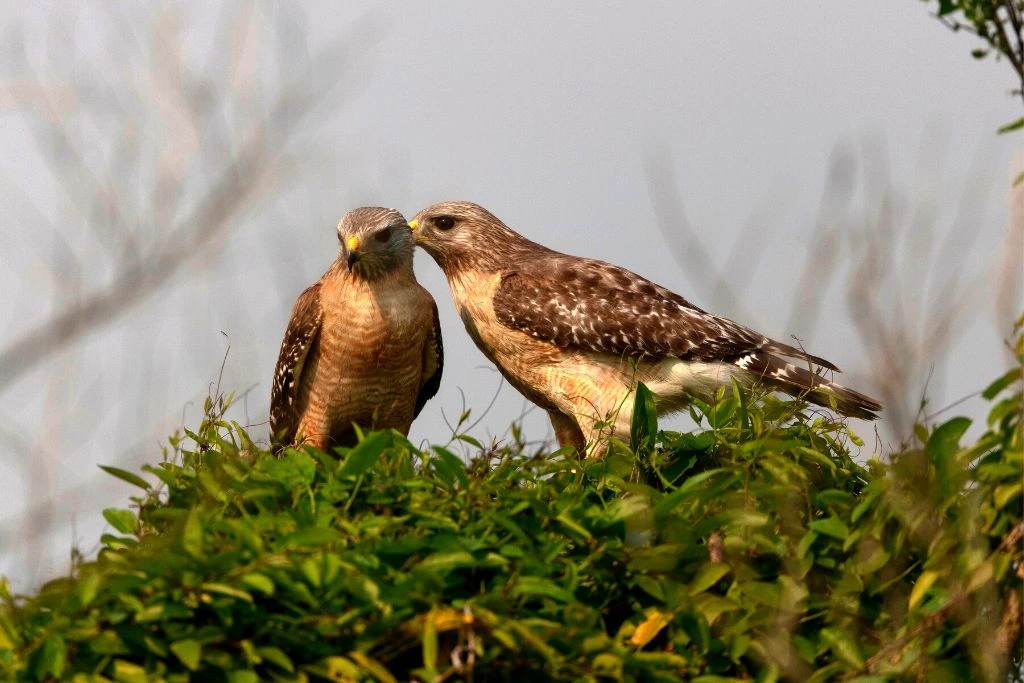
- Kingdom: Animalia
- Phylum: Chordata
- Class: Aves
- Order: Accipitriformes
- Genus: Buteo
- Species: Buteo lineatus
- Length: 15 to 23 in (38 to 58 cm) in males, 19 to 24 in (47 to 61 cm) in females
- Weight: 1.21 lb (550g) in males, 1.5lb (700g) in females
- Wingspan: 35 to 50 in (90 to 127cm)
The red-shouldered hawk (Buteo lineatus) is a medium-sized hawk with an average adult weight of around three pounds. It’s believed to be one of the hawks in North Texas that are most widespread and abundant, with an estimated population of over six million birds.
The red-shouldered hawk gets its name from its distinctive reddish shoulder patch, white underwings, and tail feathers that make them visible when perched.
Red-shouldered hawks are migratory birds living throughout most of North America except for extreme northern regions, like Alaska and Canada’s Arctic islands. They migrate south during winter months when food is scarce in their native habitat areas.
Red-shouldered hawks are forest dwellers and prefer places with many kinds of wood that have enough space for hunting efficiently. You can also find these birds in suburban areas with woodland houses. They hunt for small mammals, like squirrels, and they also like to eat lizards, amphibians, and snakes, if they have the opportunity. When they hunt, they dive onto their prey from above, which is their unique style of hunting.
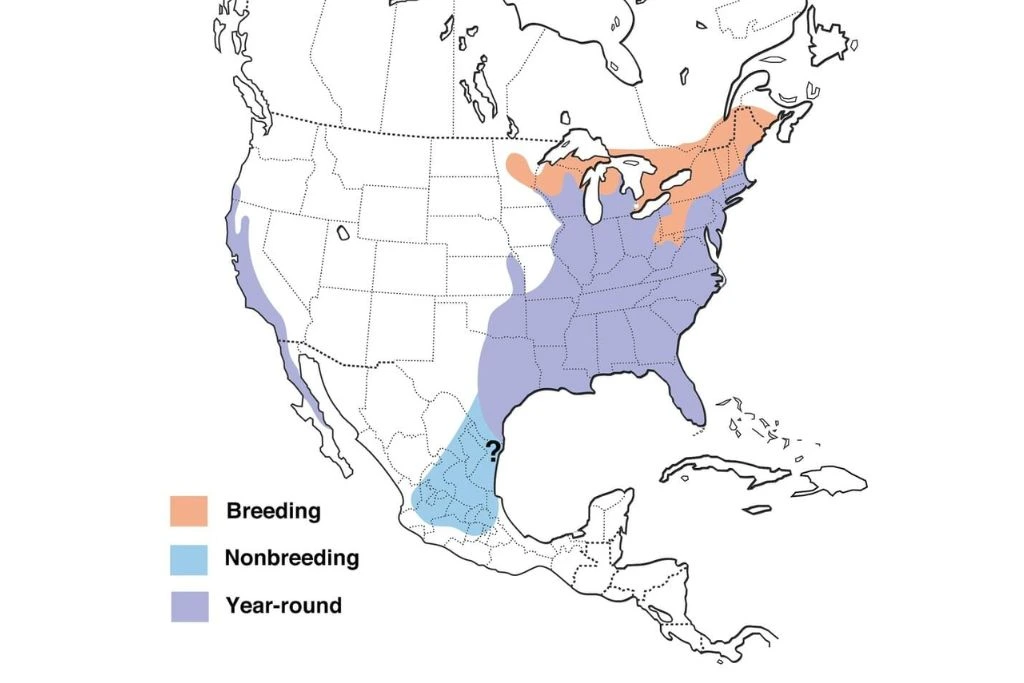
2. Sharp-Shinned Hawk
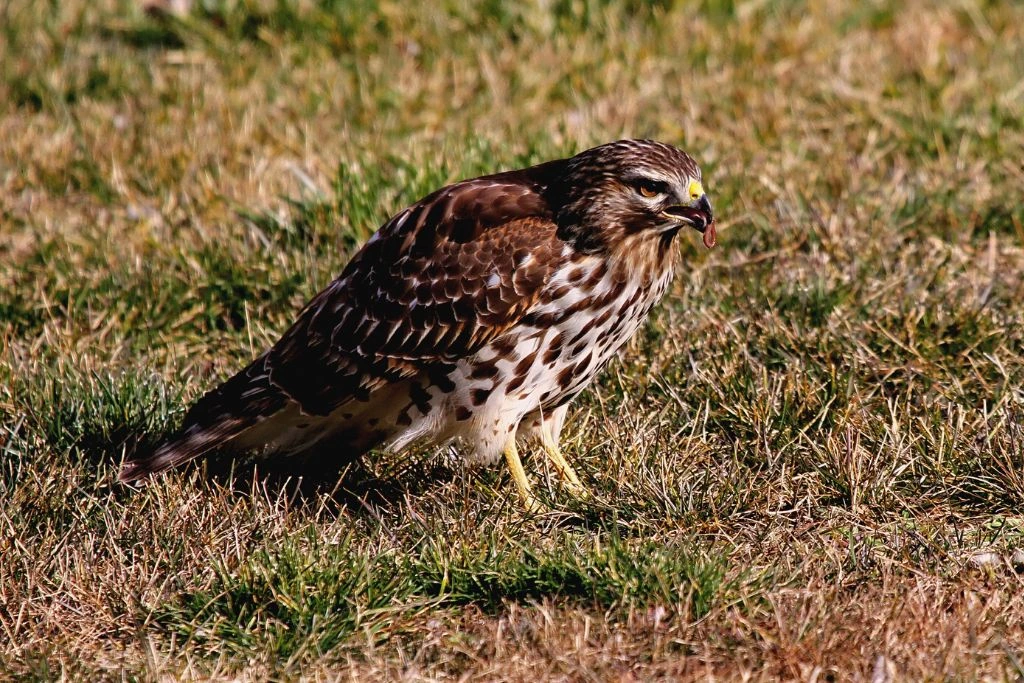
- Kingdom: Animalia
- Phylum: Chordata
- Class: Aves
- Order: Accipitriformes
- Genus: Accipiter
- Species: Accipiter striatus
- Length: 9.1 to 11.8 in (23 to 30cm) in males, 11 to 15 in (29 to 37 cm) in females
- Weight: 2.9 to 4.1 oz (82 to 115 g) in males, 5.3 to 7.7 oz (150 to 219 g) in females
- Wingspan: 17 to 23 in (42 to 58 cm) in males, 23 to 27 in (58 to 68 cm) in females
The sharp-shinned hawk (Accipiter striatus) is one of the smallest hawks found in Texas during winter. It is a migratory bird and can be found anywhere from Canada to Mexico.
These small hawks in Texas prefer to hunt tiny rodents and birds, but they will also take other prey, such as lizards or small snakes, when available. These birds are incredibly acrobatic and athletic, which helps them navigate the woods quickly.
You can identify these birds by looking for their blue-gray wings and back, with bars of orange on their chests that fade to their bellies. During flight, you will notice that their wings are relatively round and short, but they have long tails. Female sharp-shinned hawks are more significant than males.
Sharp-shinned hawks usually hunt around bird feeders and wait for songbirds to visit. They are ambush predators, meaning they will wait patiently for their prey, and then quickly dash out to chase them at high speed.
These hawks are similar but smaller than Cooper’s hawks, as they are about 15 centimeters shorter and lighter. These two birds do not perch next to each other, which makes it hard to compare and differentiate their sizes.
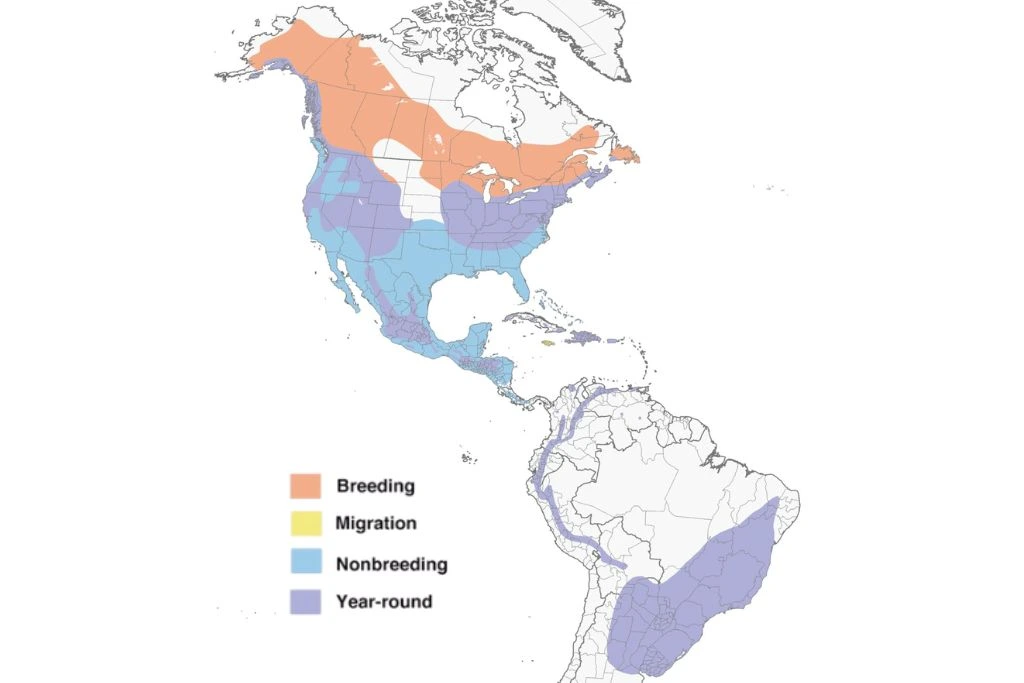
3. Cooper’s Hawk
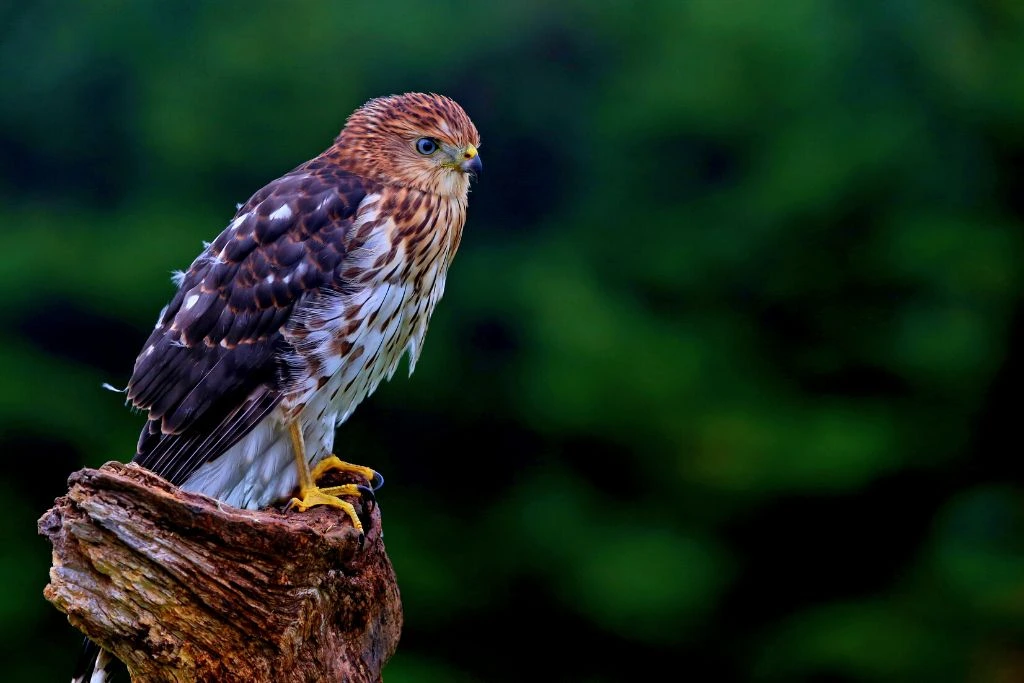
- Kingdom: Animalia
- Phylum: Chordata
- Class: Aves
- Order: Accipitriformes
- Genus: Accipiter
- Species: Accipiter cooperii
- Length: 14 to 18 in (35 to 46 cm) in males, 17 to 20 in(42 to 50 cm) in females
- Weight: 1.17 lbs (530 g)
- Wingspan: 24 to 39 in(62 to 99 cm)
Cooper’s hawk (Accipiter cooperii) is a medium-sized hawk that belongs to the Accipitridae family. It has a black body and wings with white bands on its tail feathers. You can find Cooper’s hawks in North America, Mexico, and the United States.
The name “Cooper’s” comes from David A. Coopersmith, who first discovered this species in Texas in 1834 during his research trip with John Latham Jr., who was also an expert ornithologist at this period (1807-1887).
These raptors have fantastic flying abilities, and they feed on songbirds that stay in backyards, perched on bird feeders. As mentioned above, they are similar to the sharp-shinned hawks for having blue-gray features, a small cap, and a rufous-colored chest. They only differ in size, with Cooper’s hawk being a giant raptor. They also make sounds that differ from each other, and their males are responsible for building their nests.
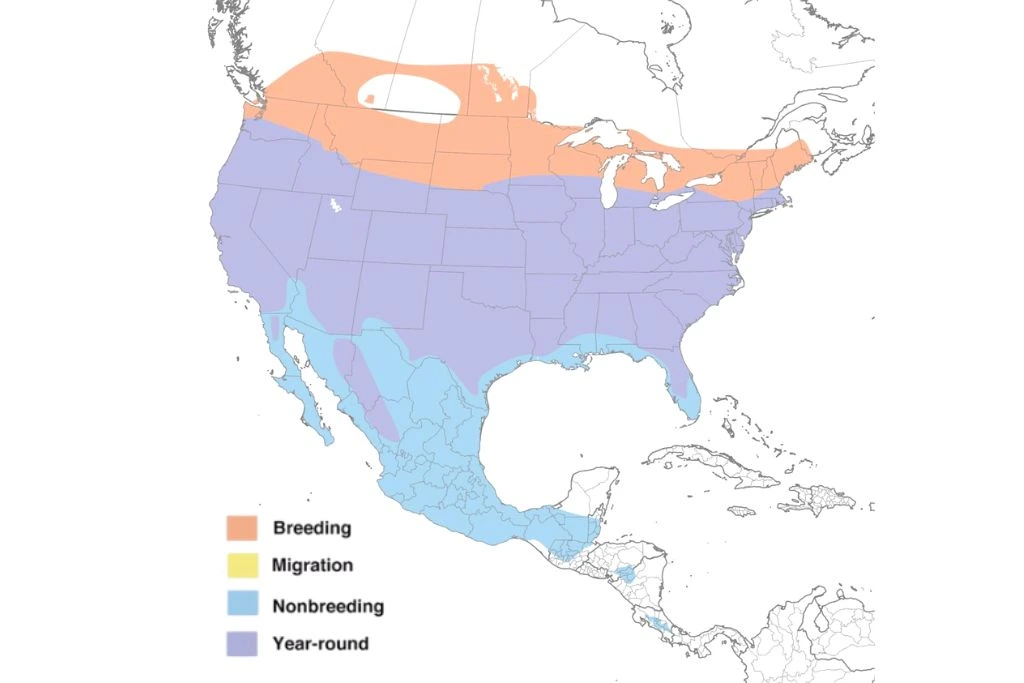
4. Northern Goshawk
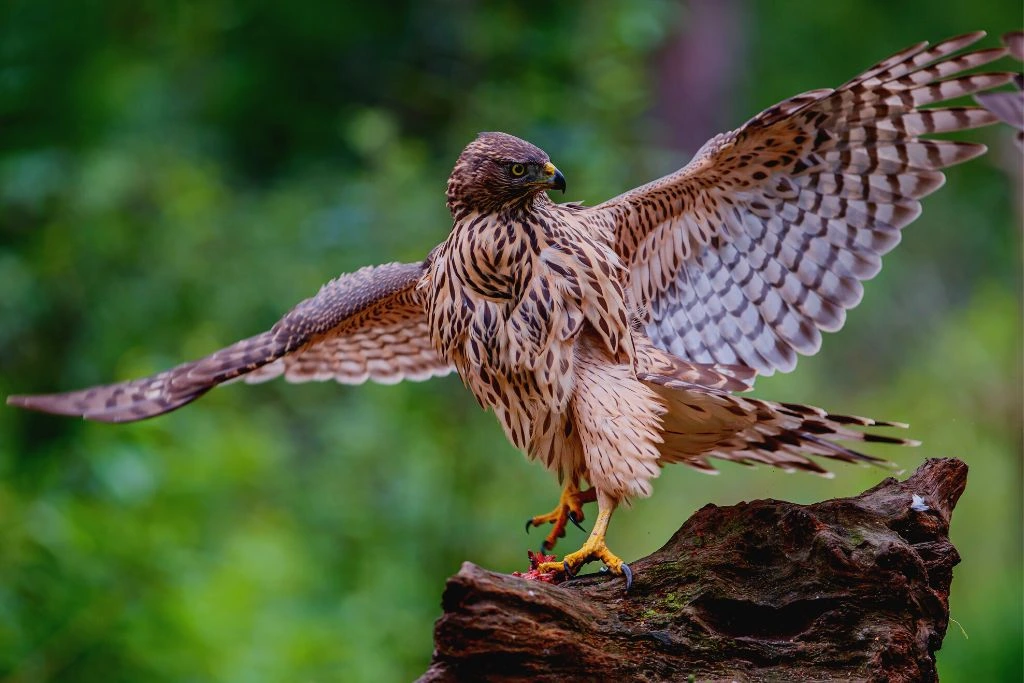
- Kingdom: Animalia
- Phylum: Chordata
- Class: Aves
- Order: Accipitriformes
- Genus: Accipiter
- Species: Accipiter gentilis
- Length: 20.9-25.2 in (53-64 cm)
- Weight: 22.3-48.1 oz (631-1364 g)
- Wingspan: 40.5-46.1 in (103-117 cm)
The northern goshawk (Accipiter gentilis) is a medium-sized raptor, native to Northern North America. The species ranges from Alaska to Southern Canada, through the United States, into Southern Canada (including Yukon), and down through most of Mexico. Northern goshawks have been sighted in many states within these regions, including Texas, Oklahoma, and Kansas but are less common than other species, such as red-tailed hawks or broad-winged hawks.
Northern goshawks are predators, and like other birds of prey, they hunt by stalking their prey from cover, and then pouncing on it using their powerful talons to grab hold before delivering a deadly blow with their beak or claws (depending on the size of the prey). They like to feed on small mammals, such as mice and voles, but they will also take on larger prey, such as rabbits, when available.
These raptors are secretive and difficult to see, as they prefer to live far from civilization. They also look similar to Cooper’s hawk, which causes many people to identify them perched in their backyards mistakenly. Northern goshawks have dark-colored heads and deep red eyes. Their upper bodies are bluish-gray in color and bluish-white to light gray in their underbody.
Northern goshawks hunt in vast areas, but they are challenging to see, especially in the city. Some of them are short-term migrants during the winter season, heading south to find enough food for their journey. The other northern goshawks remain in the same location throughout the year.
These raptors are also similar to sharp-shinned hawks and Cooper’s hawks, but they are much fiercer and larger. They will attack you if you get too close to their nests.
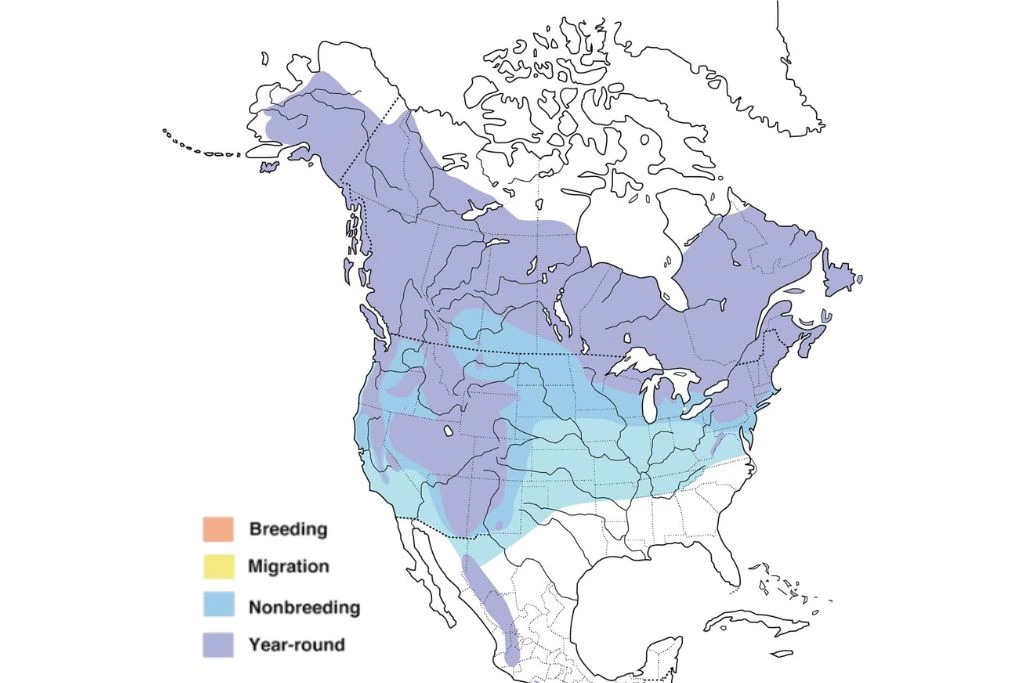
5. Rough-Legged Hawk
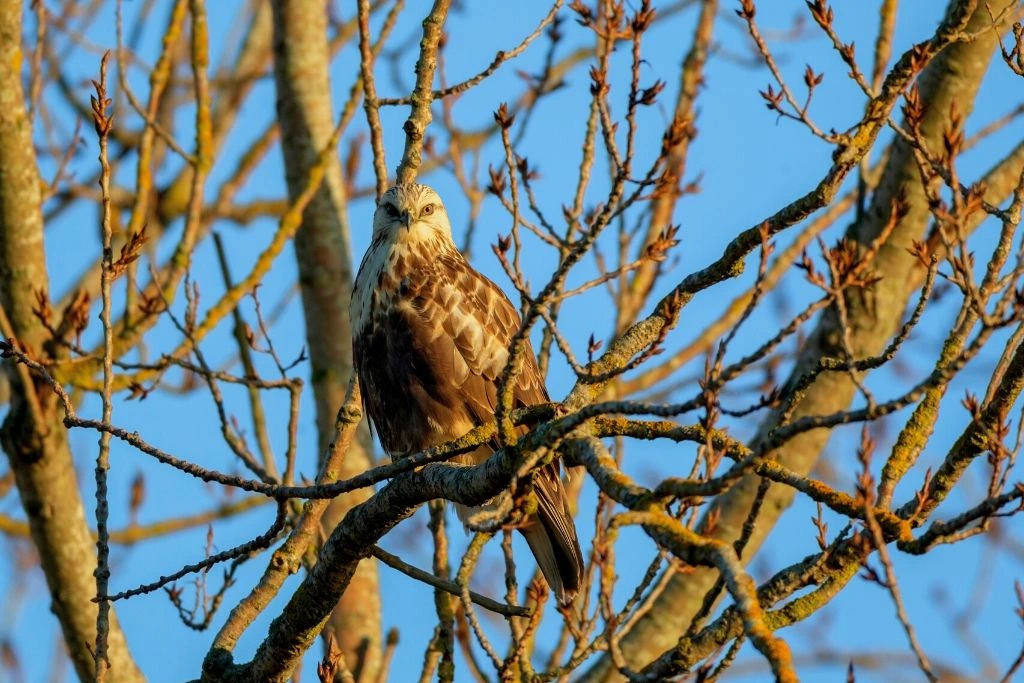
- Kingdom: Animalia
- Phylum: Chordata
- Class: Aves
- Order: Accipitriformes
- Genus: Buteo
- Species: Buteo lagopus
- Length: 18.5-20.5 in (47-52 cm)
- Weight: 25.2-49.4 oz (715-1400 g)
- Wingspan: 52.0-54.3 in (132-138 cm)
The rough-legged hawk (Buteo lagopus) is the largest of the North American hawks and is one of only a few species that breed in Alaska. You can find these large hawks in Texas and other areas, such as Northern Canada, Alaska, and the north part of the United States.
The rough-legged hawk used to be a subspecies of the red-tailed hawk, but it is now its own recognized species, following studies showing they were two different animals. They are also known as rough-legged buzzards and rough-legged falcons, which live and breed on the Arctic tundra during summer.
These huge hawks will stay in Texas during the winter season and their south migration. You can find these raptors in open areas.
They have a unique way of hunting their prey. They will usually hover toward the wind while searching for food.
Rough-legged hawks have feathers that go all the way down to their feet, which helps them keep warm during the winter. They are silent except when near their nests, where they make a mewing sound.
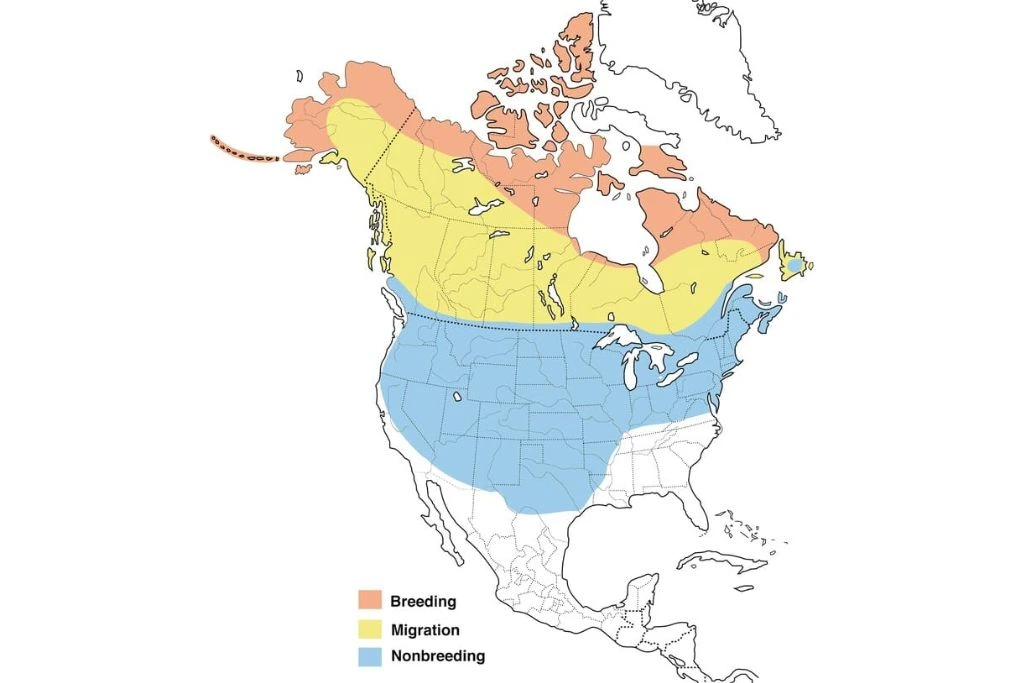
6. Broad-Winged Hawk
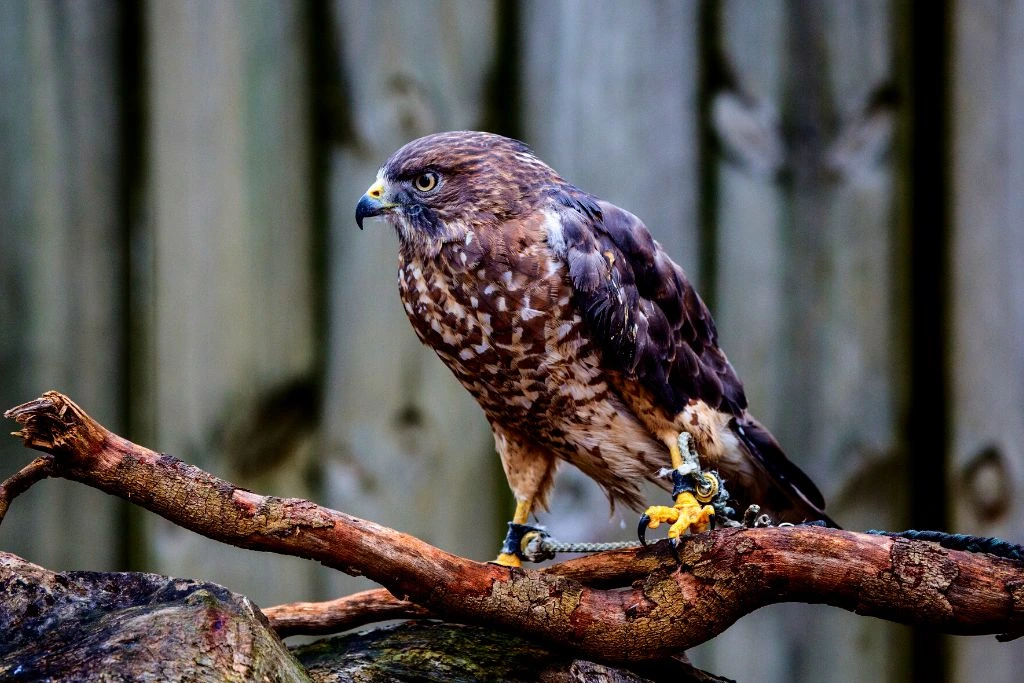
- Kingdom: Animalia
- Phylum: Chordata
- Class: Aves
- Order: Accipitriformes
- Genus: Buteo
- Species: Buteo platypterus
- Length: 13.4-17.3 in (34-44 cm)
- Weight: 9.3-19.8 oz (265-560 g)
- Wingspan: 31.9-39.4 in (81-100 cm)
Broad-winged hawks (Buteo platypterus) live in Texas and other states. They are medium-sized hawks with a wingspan of about three feet. They have a white belly, a brown back, and a white eyebrow. They have short and stocky bodies, which helps them adapt to life in the forest.
Broad-winged hawks that live in Texas are common, but they like to spend most of their time in deep woods, far away from civilization.
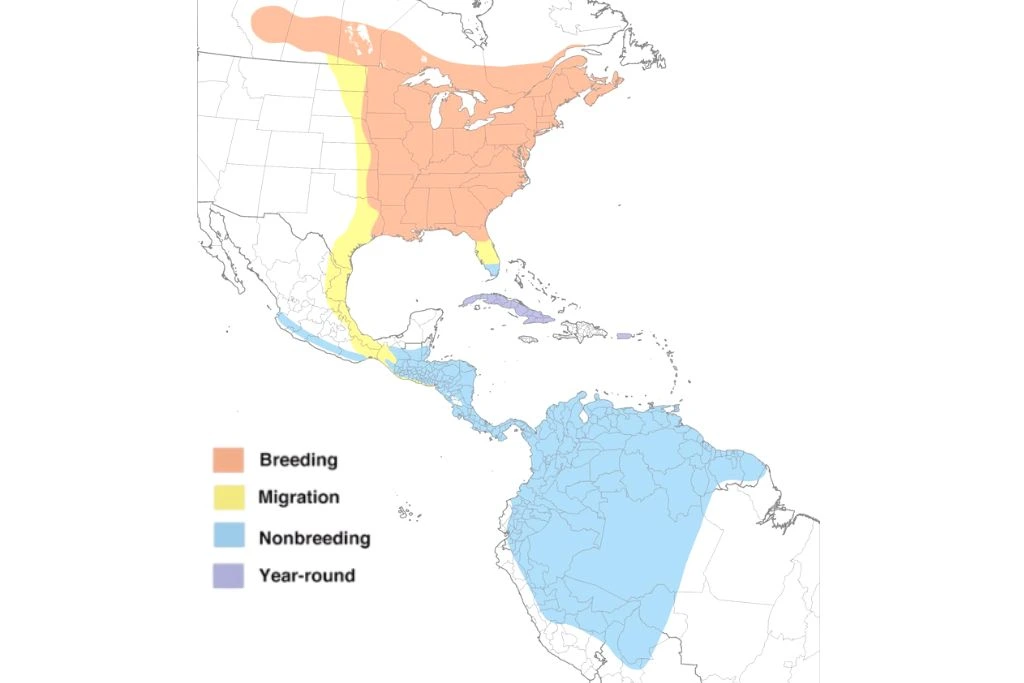
7. Ferruginous Hawk
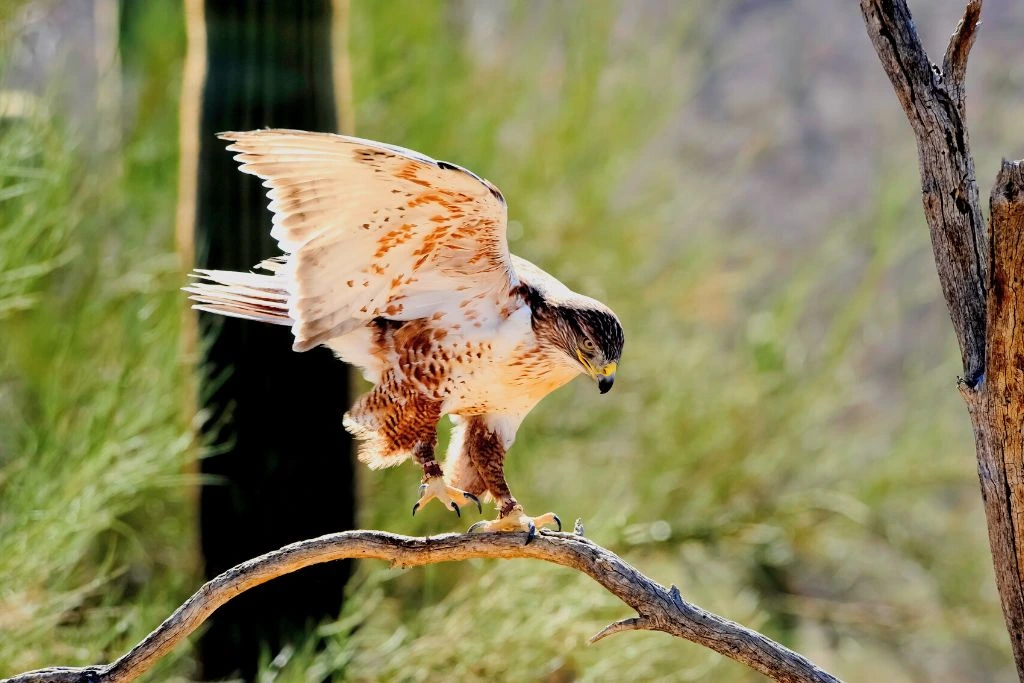
- Kingdom: Animalia
- Phylum: Chordata
- Class: Aves
- Order: Accipitriformes
- Genus: Buteo
- Species: Buteo regalis
- Length: 22.1-27.2 in (56-69 cm)
- Weight: 34.5-73.2 oz (977-2074 g)
- Wingspan: 52.4-55.9 in (133-142 cm)
The Ferruginous hawk (Buteo regalis) is a large, long-winged hawk native to North America. It is also known as the desert hawk because it lives in desert areas.
The Ferruginous hawk has brown feathers on its wings and tail, white spots on its back, and yellow eyes with dark centers. This bird can grow up to seven feet long.
These hawks are said to be the strongest of all hawks. Some even mistake this large breed for an eagle.
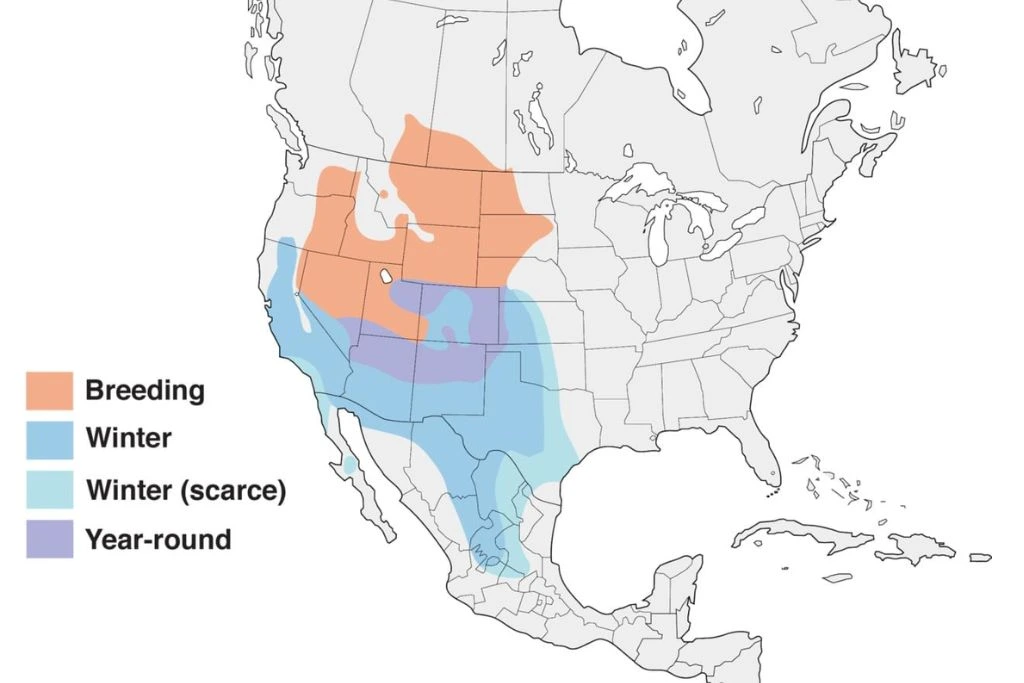
8. Short-Tailed Hawk
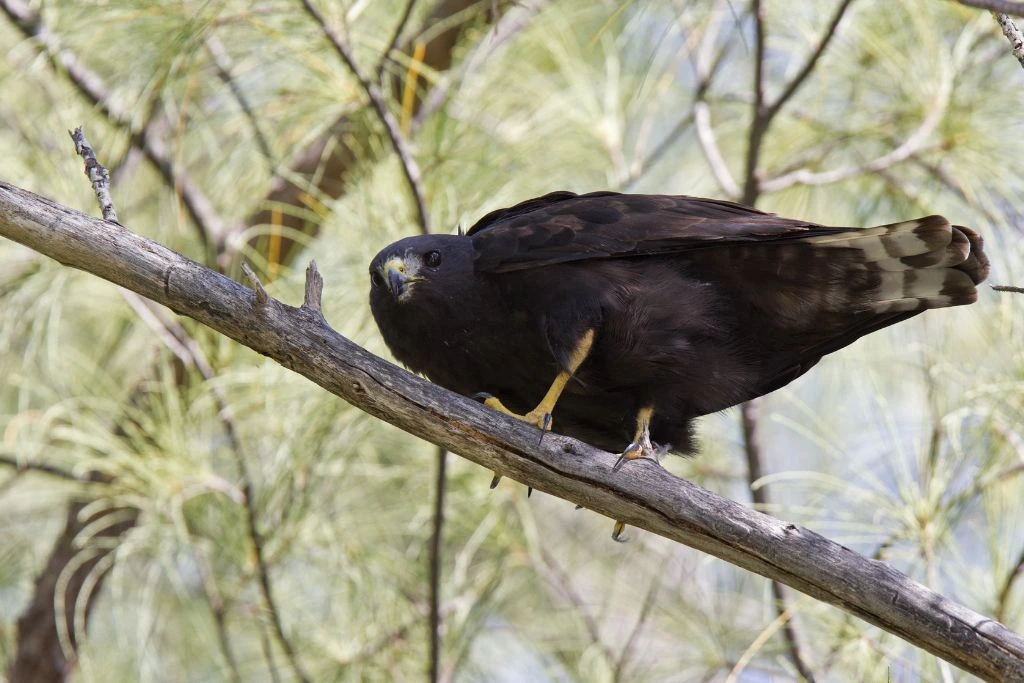
- Kingdom: Animalia
- Phylum: Chordata
- Class: Aves
- Order: Accipitriformes
- Genus: Buteo
- Species: Buteo brachyurus
- Length: 15.3-17.3 in (39-44 cm)
- Weight: 13.6-16.9 oz (385-480 g)
- Wingspan: 32.7-40.5 in (83-103 cm)
Short-tailed hawks (Buteo brachyurus) live in Texas and the Southwest. They are small hawks that eat small mammals, birds, and reptiles. They are not endangered, but they are pretty rare to find.
This is the reason why it’s also among the birds in the US with minimal studies. Based on a few sightings, the dark morph adult of the short-tailed hawk has paler undersides, notable on their outer flight feathers. Juveniles will have similar feathers but with the presence of spots.
The light morph adult usually has brown above and white below, accentuated by a rusty neck patch, white throat, and dark hood.
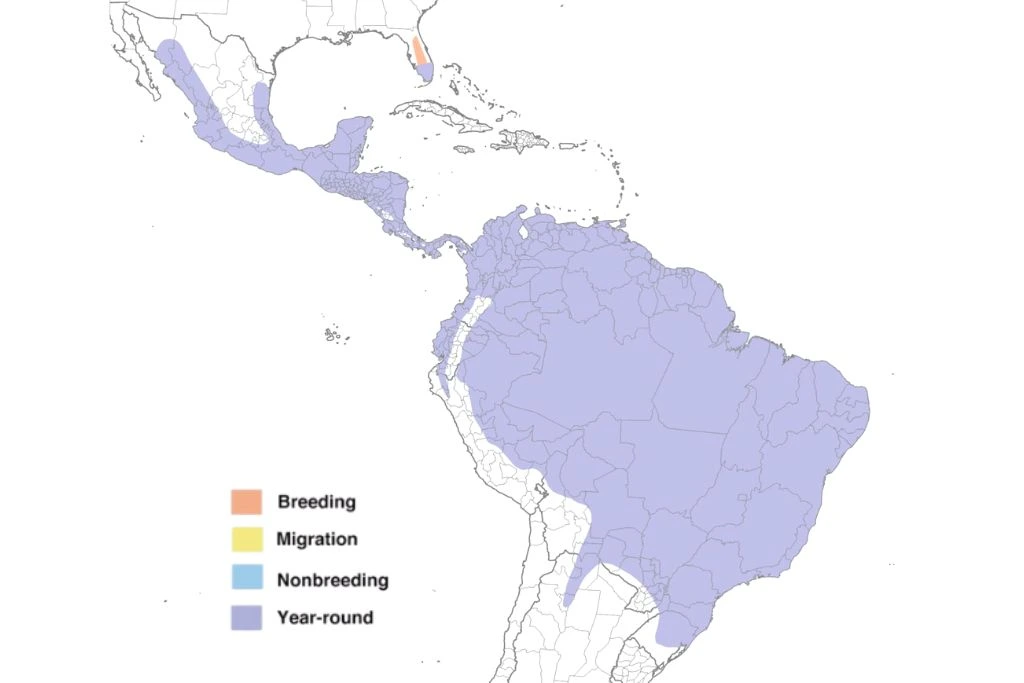
9. Swainson’s Hawk
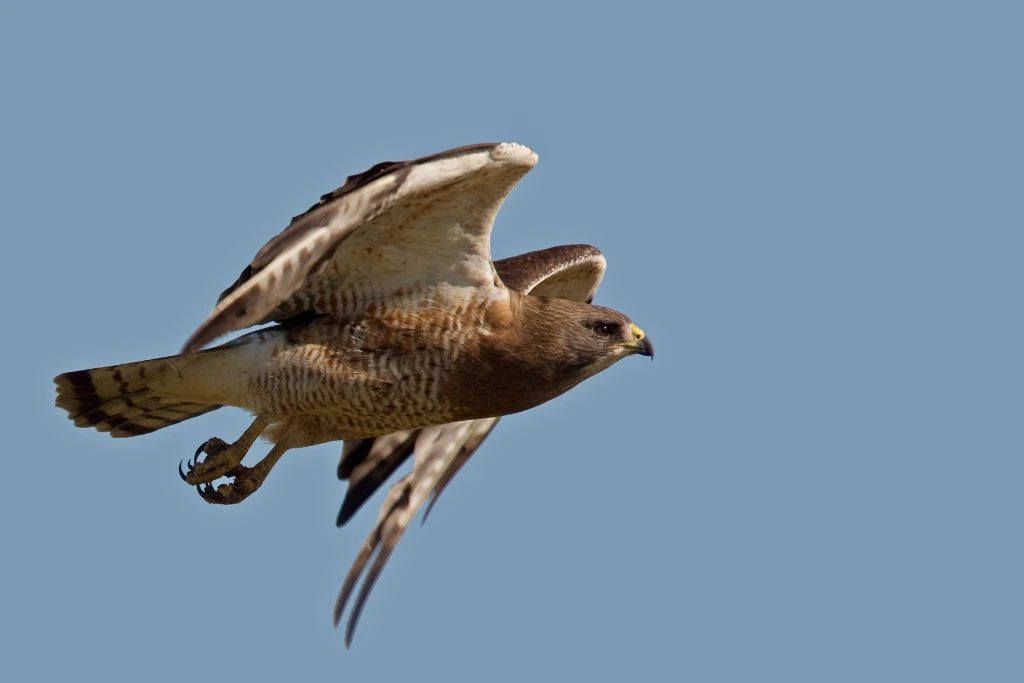
- Kingdom: Animalia
- Phylum: Chordata
- Class: Aves
- Order: Accipitriformes
- Genus: Buteo
- Species: Buteo swainsoni
- Length: 17–22 in (43–56 cm)
- Weight: 1.1–3.7 lb (0.5–1.7 kg)
- Wingspan: 46–54 in (117–137 cm)
Swainson’s hawk (Buteo swainsoni) is a medium-sized bird that migrates between Texas and Mexico, where it breeds.
The Swainson’s hawk is gray with black wings and tail, white underparts and face mask (upper mandible), a black cap on top of the head, red eyes, and bill tips that are yellowish-green or brownish-yellow at the base then becoming dark brown at the tip, as if they’ve been dipped in paint.
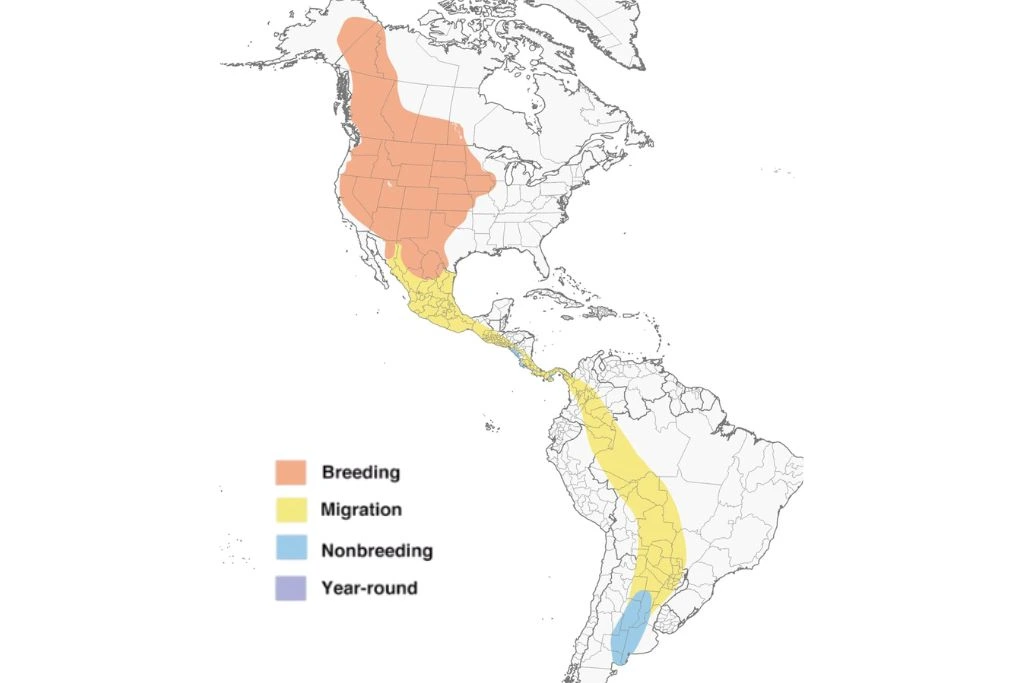
10. Gray Hawk
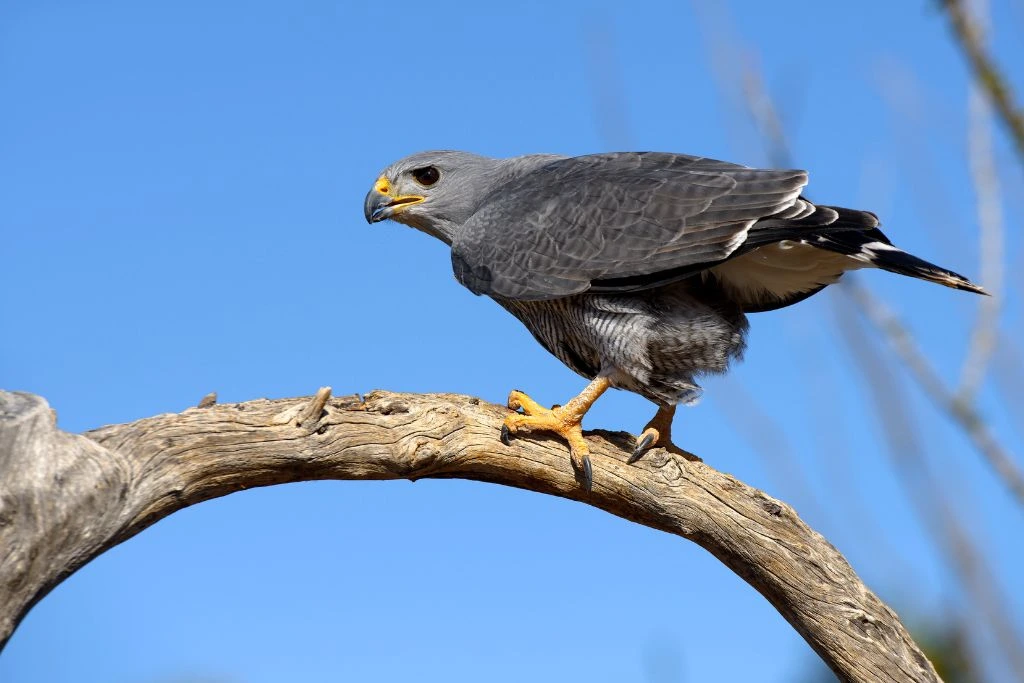
- Kingdom: Animalia
- Phylum: Chordata
- Class: Aves
- Order: Accipitriformes
- Genus: Buteo
- Species: Buteo plagiatus
- Length: 18–24 in(46–61 cm)
- Weight: 16.8 oz (475 g)
- Wingspan: 35 in (90cm)
The gray hawk (Buteo plagiatus) is a small hawk living in Texas. It is native to the state, and you can see them soaring through the air, hunting for prey. These birds have gray feathers, making them look appealing when perched on branches or trees. They also have long tails with white markings on them, as well as black legs and feet.
The gray hawk is a raptor—a bird of prey—and it has many different characteristics that make it unique among other species of animals in Texas.
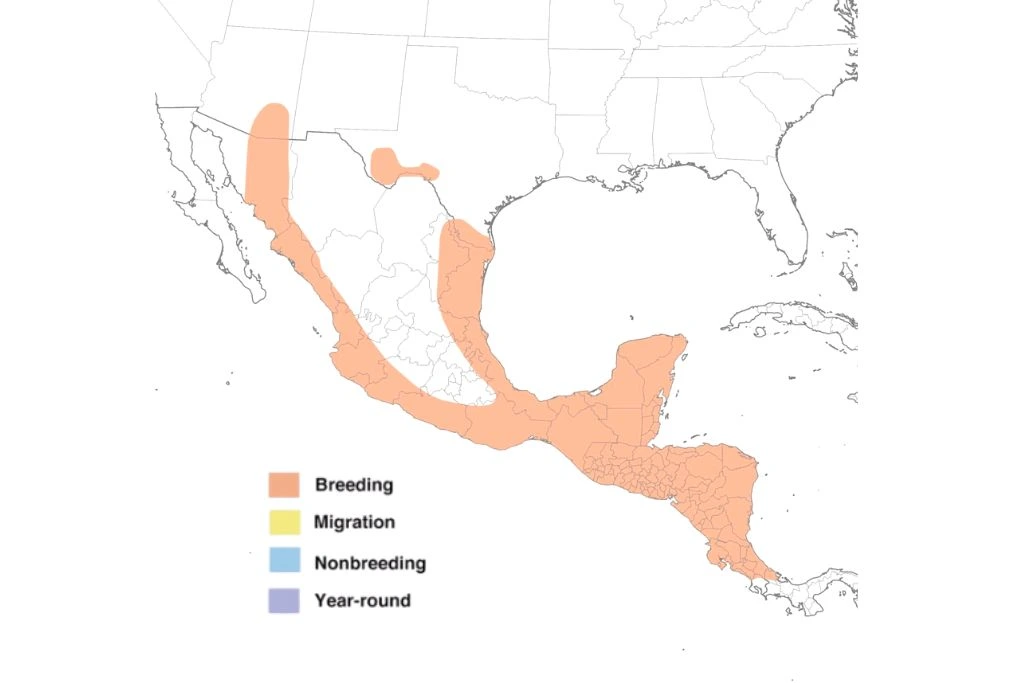
11. Zone-Tailed Hawk
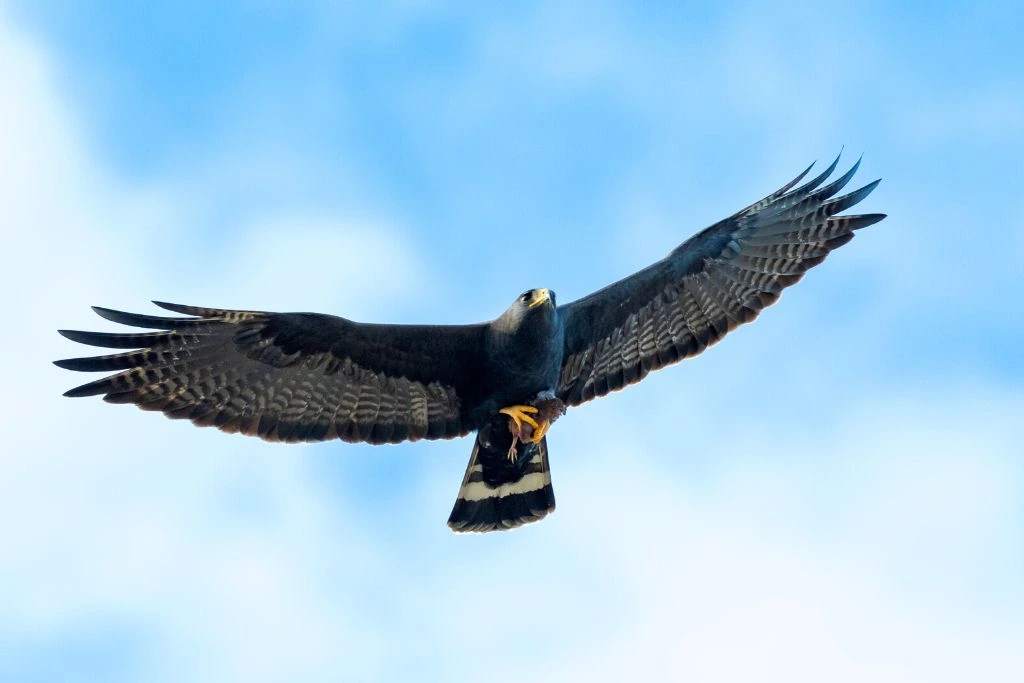
- Kingdom: Animalia
- Phylum: Chordata
- Class: Aves
- Order: Accipitriformes
- Genus: Buteo
- Species: Buteo albonotatus
- Length: 17.7-22.1 in (45-56 cm)
- Weight: 21.4-23.5 oz (607-667 g)
- Wingspan: 46.9-55.1 in (119-140 cm)
The zone-tailed hawk (Buteo albonotatus) is a medium-sized bird you can find in Texas, but it also lives in Mexico and Central America. The name “zone-tailed hawk” comes from its tail feathers. These look like a line of six boxes on the end of the tail feathers, called rachis feathers.
Zone-tailed hawks eat small rodents and birds, like quail, grouse, and turkey that live around fields where they hunt for prey during early morning hours when there’s not much light left to see them by daylight; either because they’re asleep or have just woken up!
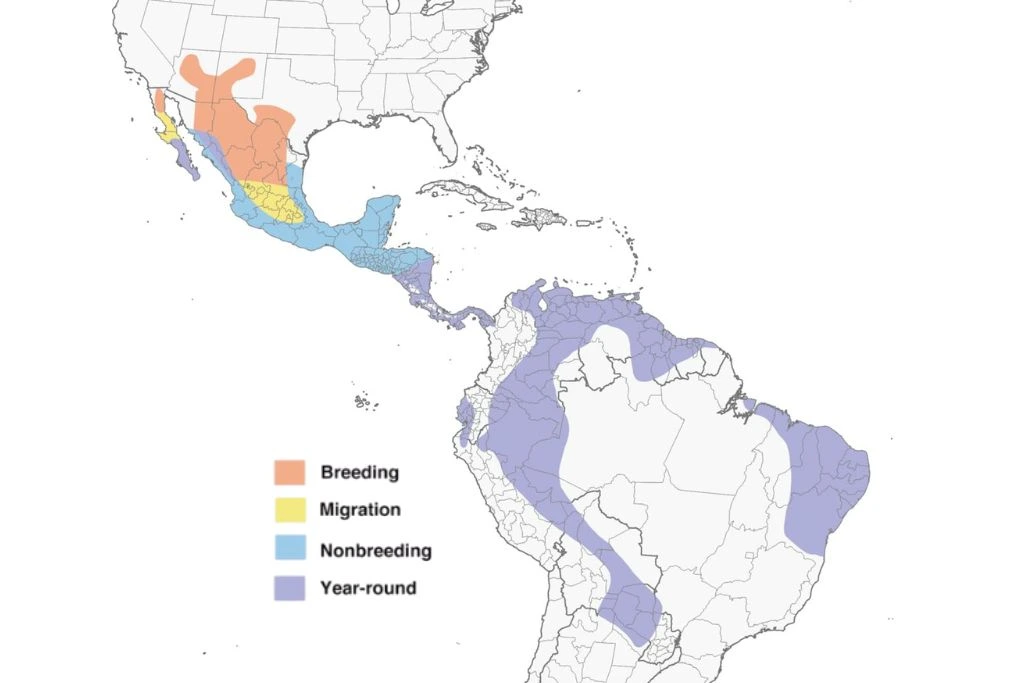
12. White-Tailed Hawk
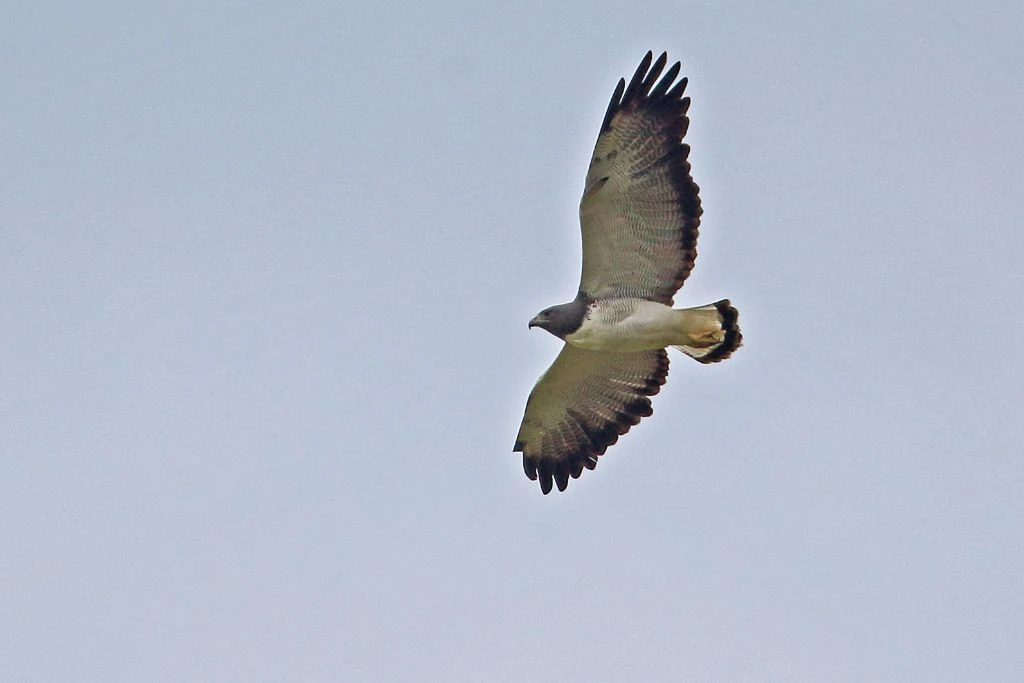
- Kingdom: Animalia
- Phylum: Chordata
- Class: Aves
- Order: Accipitriformes
- Genus: Geranoaetus
- Species: Geranoaetus albicaudatus
- Length: 18.1-20.5 in (46-52 cm)
- Weight: 31.0-43.6 oz (880-1235 g)
- Wingspan: 50.4-51.6 in (128-131 cm)
Source: The Cornell Lab | Macaulaylibrary.org
White-tailed hawks (Geranoaetus albicaudatus) are medium-sized hawks with a wingspan reaching up to two feet. You can find them in open areas and the western half of Texas. In the eastern half of Texas, white-tailed hawks are more common near rivers or lakes where they can hunt for fish.
One of the most common hawks in Central Texas, it’s common to see these birds soaring over fields or grazing on grasses at dusk or dawn. White-tailed hawks in East Texas are also a common sighting.
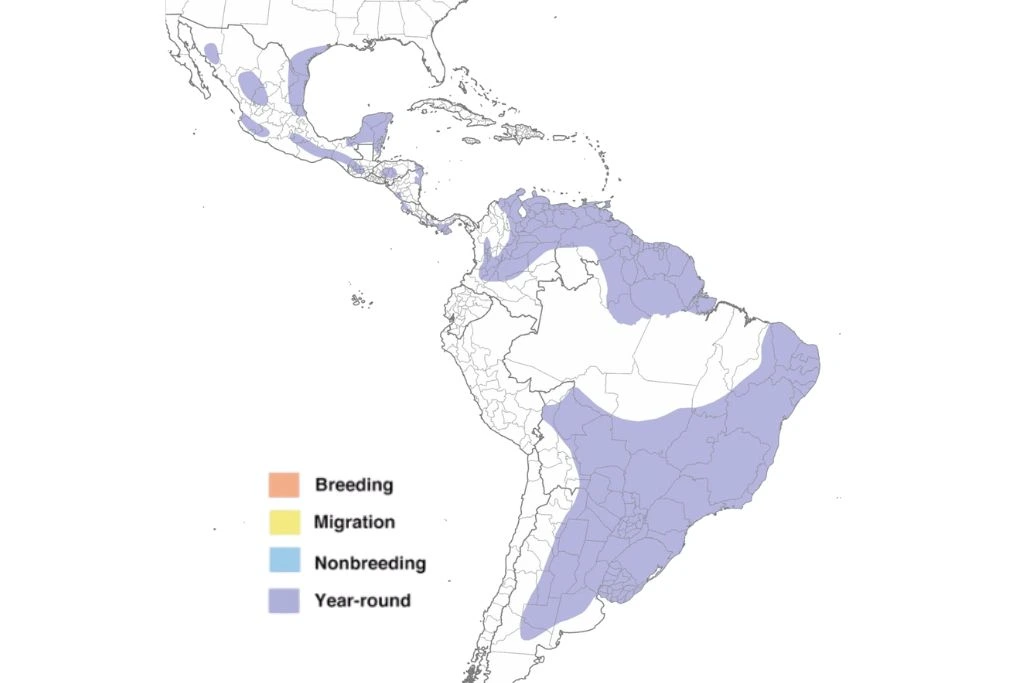
13. Common Black Hawk
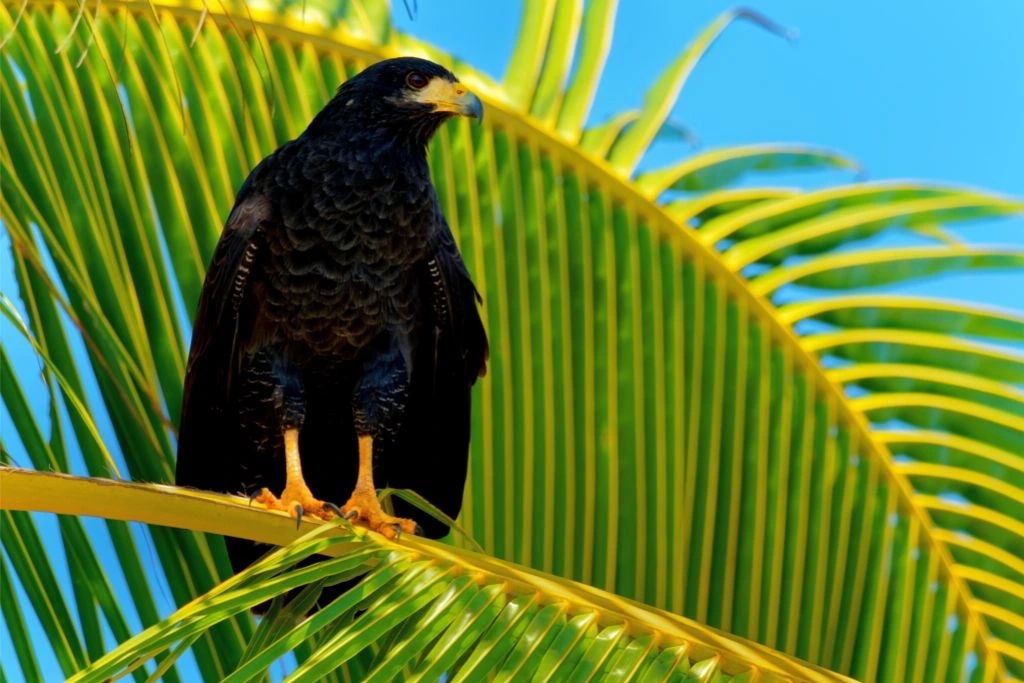
- Kingdom: Animalia
- Phylum: Chordata
- Class: Aves
- Order: Accipitriformes
- Genus: Buteogallus
- Species: Buteogallus anthracinus
- Length: 16.9-22.1 in (43-56 cm)
- Weight: 27.9 oz (790 g)
- Wingspan: 46.1 in (117 cm)
The common black hawk (Buteogallus anthracinus) is a medium-sized bird of prey that belongs to the genus Buteogallus. You can find these hawks in North America and Central America. This species is known for its distinctive black plumage and white wingtips.
The common black hawk lives across all habitats, from open plains to dense forests or mountain crests. They prefer habitats with plenty of grasses so they can feed on them easily when hunting prey, such as rodents or rabbits (which are also very common).
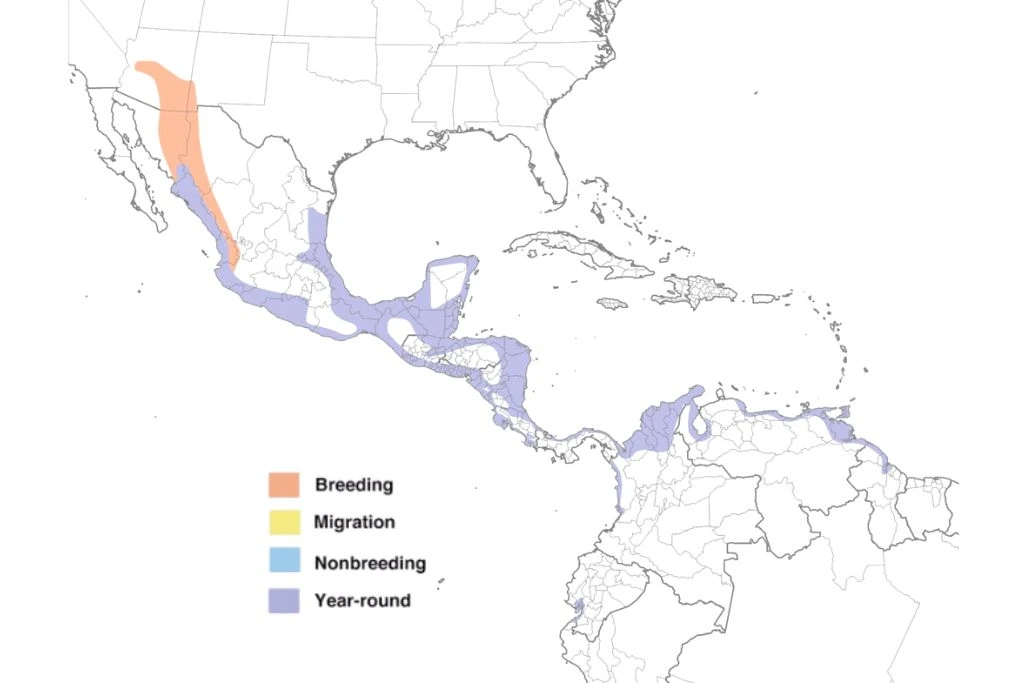
14. Northern Harrier
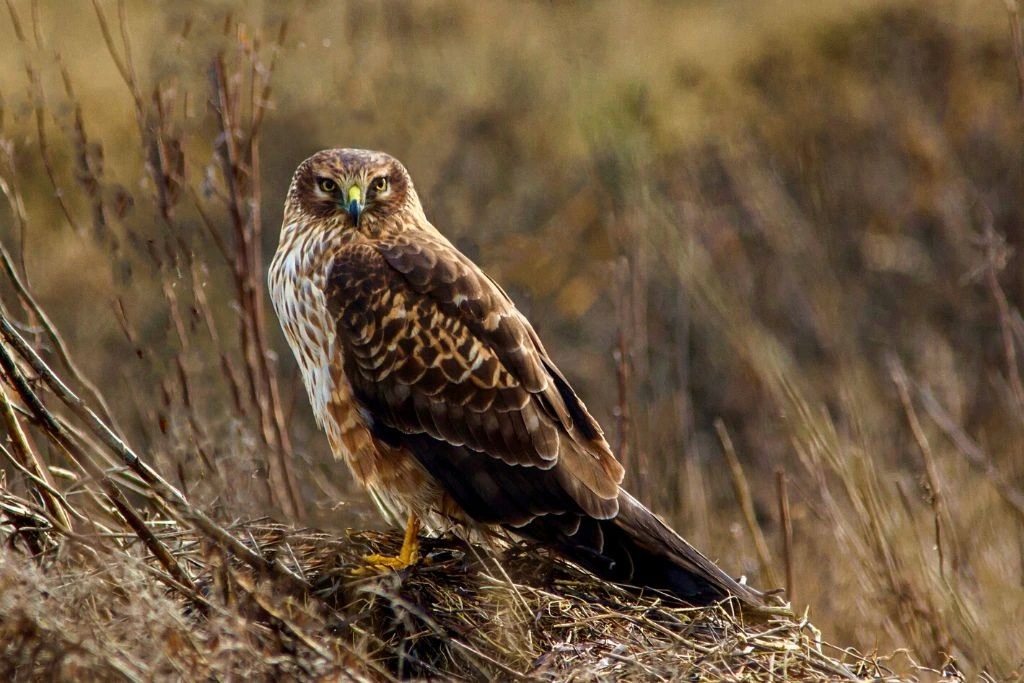
- Kingdom: Animalia
- Phylum: Chordata
- Class: Aves
- Order: Accipitriformes
- Genus: Circus
- Species: Circus hudsonius
- Length: 18.1-19.7 in (46-50 cm)
- Weight: 10.6-26.5 oz (300-750 g)
- Wingspan: 40.2-46.5 in (102-118 cm)
The northern harrier (Circus cyaneus) is a large, slender hawk with long wings and a tail. It is a migratory bird that prefers to nest in open areas of dry land or grassland where it can hunt for prey. The northern harrier is predatory, feeding on mammals, such as rodents and rabbits. The species is solitary and diurnal (active during daylight hours).
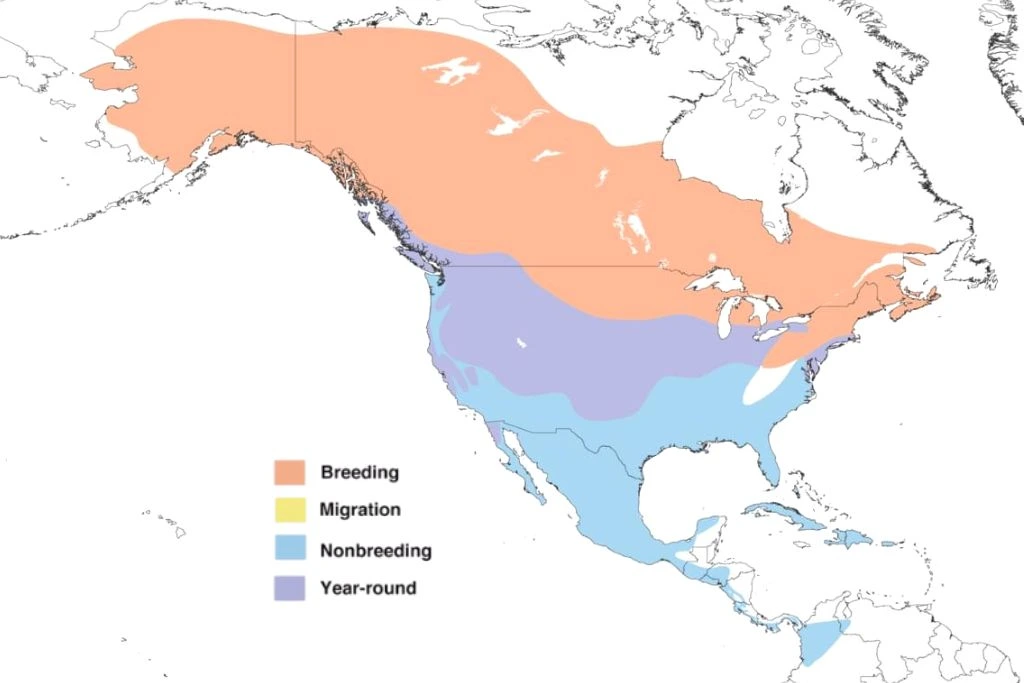
15. Red-Tailed Hawk
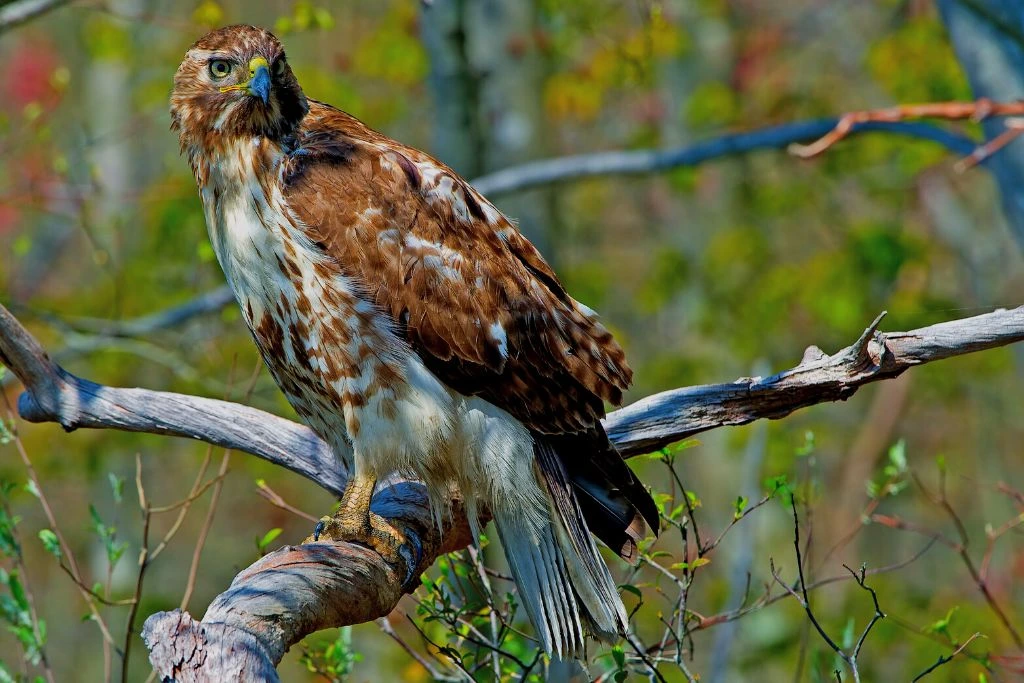
- Kingdom: Animalia
- Phylum: Chordata
- Class: Aves
- Order: Accipitriformes
- Genus: Buteo
- Species: Buteo jamaicensis
- Length: 17.7-22.1 in (45-56 cm) in males, 19.7-25.6 in (50-65 cm) in females
- Weight: 24.3-45.9 oz (690-1300 g) in males, 31.8-51.5 oz (900-1460 g) in females
- Wingspan: 44.9-52.4 in (114-133 cm) in males, 44.9-52.4 in (114-133 cm) in females
The red-tailed hawk (Buteo jamaicensis) is a large, powerful bird that you can find in Texas. They are the most common hawk in Texas but are also present throughout the US. Red-tails prefer to live in open areas, like fields, forests, and prairies, but will also hunt around cities and suburbs. Due to their ability to adapt to different environments, red-tails fly around at airports where there’s lots of room for hunting prey, like small rodents or birds (or even people!).
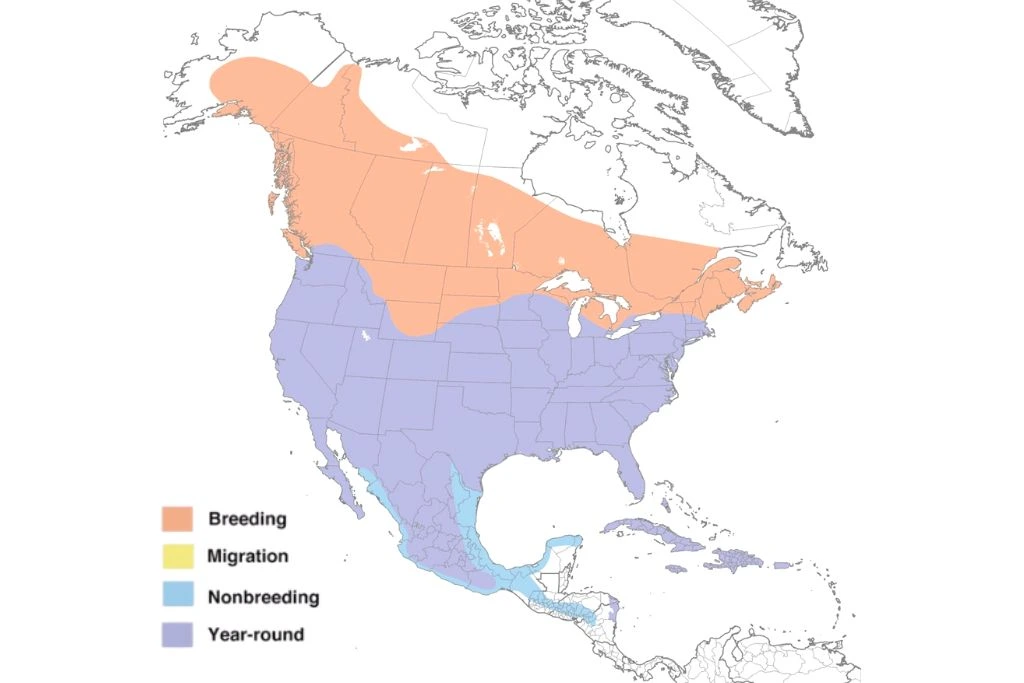
16. Harris’s Hawk
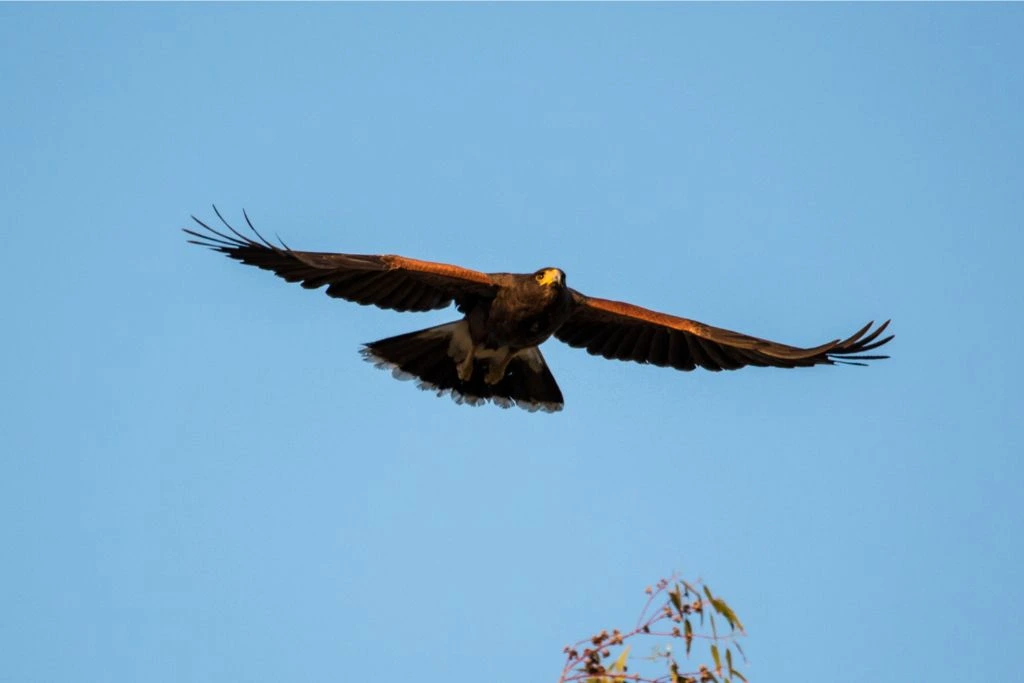
- Kingdom: Animalia
- Phylum: Chordata
- Class: Aves
- Order: Accipitriformes
- Genus: Parabuteo
- Species: Parabuteo unicinctus
- Length: 18.1-23.2 in (46-59 cm)
- Weight: 18.2-31.0 oz (515-880 g)
- Wingspan: 40.5-46.9 in (103-119 cm)
Harris’s hawk (Parabuteo unicinctus) is a medium-sized bird. This species of hawk in Southern Texas is known to proliferate widely. It is a native of the Southwest, where it has been expanding its range for decades, but it also makes its home in Northern Mexico.
Harris’s hawk is a migratory bird and an annual resident in Texas. However, this species does not migrate south during winter months or toward more temperate regions, such as Arizona or New Mexico.
Harris’s hawks are natural predators and will attack other birds on sight if they are hungry enough.

Hawks Find a Home in Texas
Texas is home to many different kinds of hawks. We hope this list of hawks in Texas has helped you learn more about the birds that call it home. These are some fantastic places to go to if you want to see them in person. If you can’t find time, browse these pictures of hawks in Texas and enjoy!



